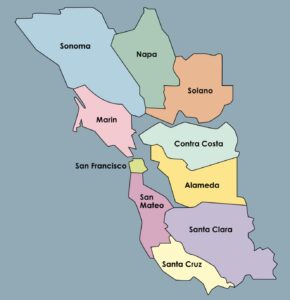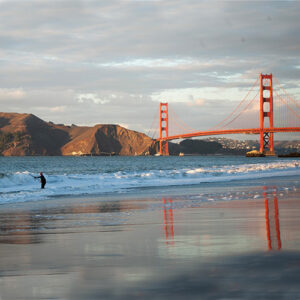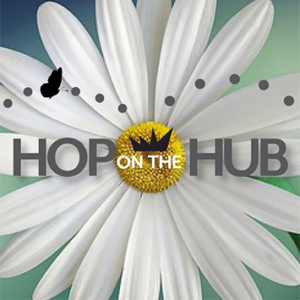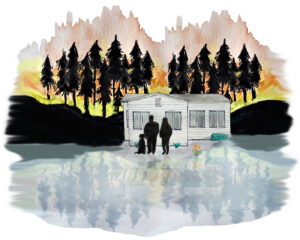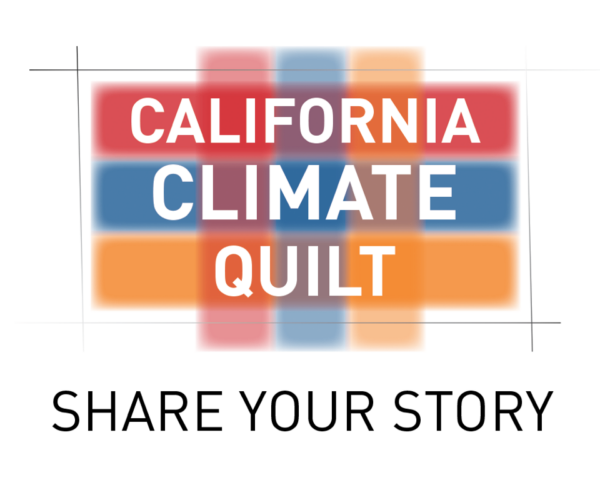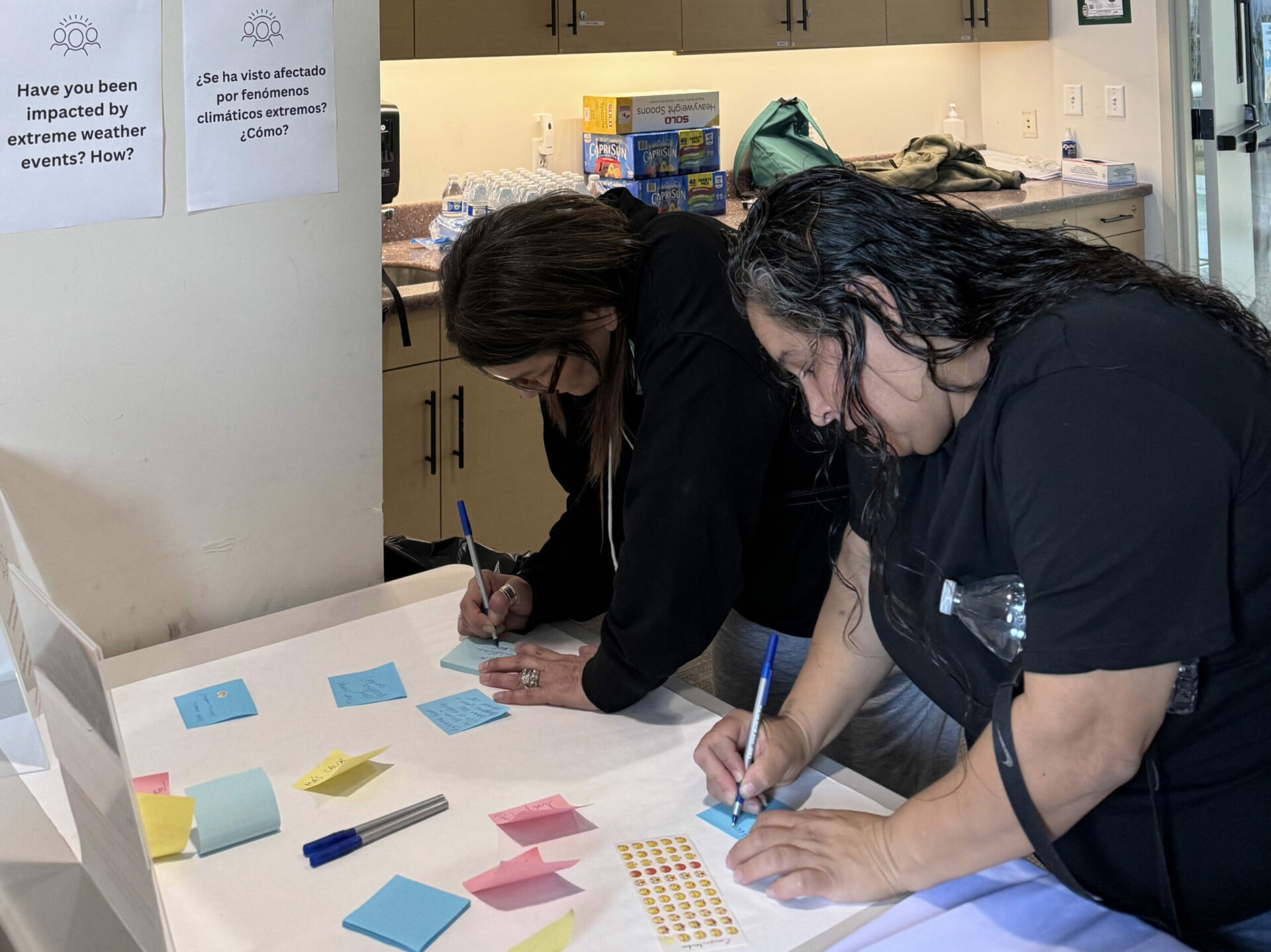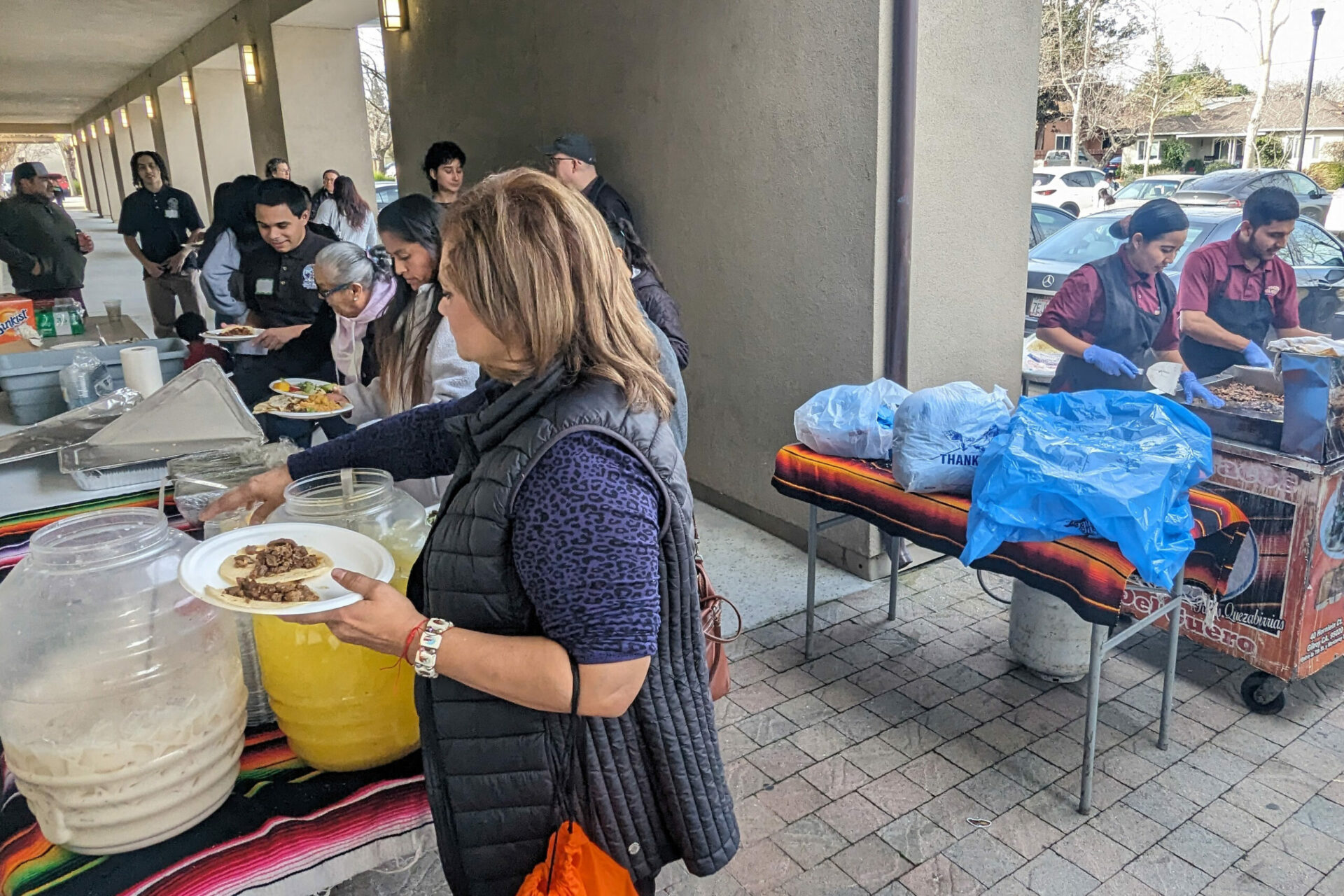Changemaker Gets to Know Gilroy
Mariah Padilla at Gilroy Public Library. Photo: Greenbelt Alliance
Mariah Padilla wants to help create positive change in the region she grew up in. As a Resilience Fellow at Greenbelt Alliance, a San Francisco Bay Area nonprofit organization working on regional conservation and climate resilience initiatives, Padilla is working with Gilroy community members facing severe impacts of flooding, wildfire, and extreme heat.
Gilroy and East San Jose are among 18 hotspots where communities are at greatest risk of climate hazards in the Bay Area, according to Greenbelt Alliance. Gilroy, a town about 16 miles south of San Jose known as the “Garlic Capital of the World,” is historically an agricultural community and home to about 60,000 residents. In February 2024, Greenbelt Alliance, along with the Community Agency for Resources, Advocacy and Services, Tenacious Group, and Ashes to Beauty, received a $470,000 grant from the California Strategic Growth Council to improve climate adaptation and emergency resources in East San Jose and Gilroy. CARAS works directly with Latino youth and families on issues such as immigration, voting rights, student advocacy, and workforce development and protections.
“I am excited to learn more about what these communities need,” says Padilla, who is also a current graduate student in the Master of City Planning program at UC Berkeley. Prior to graduate school, Padilla worked on projects related to tribal climate resilience, sea level rise, and coastal resilience planning with the California Governor’s Office of Planning and Research.
As part of her fellowship, Padilla helped Greenbelt and CARAS host a Forum For a Greener Future at the Gilroy Public Library. The January forum, attended by over 40 community members and local organizations, included extreme heat surveys and community visioning activities.
“What we really heard from the community is that they didn’t feel prepared for the climate impacts they have been facing,” she says. “Many [people] didn’t know where emergency evacuation sites were. They wanted an opportunity to learn about climate change and how to best prepare themselves.”
Photo: Greenbelt Alliance
The event organizers, in turn, wanted to ensure that the voices and needs of community members would play a central role in the process of creating a resilience hub in Gilroy. As Padilla explained, the community engagement process will ultimately determine what the resilience hub looks like, and how it can serve both Gilroy and East San Jose. But the idea is to support residents and coordinate resource distribution and services before, during, and after a climate emergency.
In response to the digital divide (unequal access to smartphones, computers, and the internet), and the lack of centralized resources for climate emergencies in Gilroy, Padilla is also developing a multi-hazard disaster preparedness guide. Padilla is developing the guide as a part of her university coursework and fellowship. Her goal is to disseminate it – both in print and on the County of Santa Clara website – as a living toolkit for the community.
Enjoying the food offerings at Gilroy’s Forum For A Greener Future. Photo: Greenbelt Alliance
Padilla grew up in South San Francisco, and although her community has not experienced extreme heat or flooding, its housing crisis is directly tied to the climate crisis. From extreme weather conditions to wildfire smoke, climate impacts can physically damage housing properties and structures, lead to increased housing costs, and also influence where and how new housing should be built, she says.
As a woman of color in planning, which she says is a historically white, male-dominated field, Padilla strives to advocate for more equitable city planning by centering community voices throughout the planning process.
“We are seeing the resilience hub in Gilroy actually coming to fruition, which will foster community climate resilience and everyday resilience,” says Padilla. “It shouldn’t just be a space for when climate disasters happen. It should be a space where community members can come together.”
Other Recent Posts
Learning the Art of Burning to Prevent Wildfire
In Santa Rosa’s Pepperwood Preserve, volunteers are learning how controlled fires can clear out natural wildfire fuel before it can spark.
Martinez Residents Want More Than Apologies — They Want Protection
After a 2022 release of toxic dust and a February 2025 fire, people in the northeast Bay town are tired of waiting for safety improvements.
Weaving Fire Protection Out Of What’s Already There
A new Greenbelt Alliance report shows how existing vineyards, grasslands, and managed forests can slow wildfire and save vulnerable homes.
Fall Plantings Build Pollinator Habitats in Concord
Community groups, climate advocates and a church are coming together to plant pollinator gardens as monarchs, bees see population declines.
Newark Needs Housing, But Could Shoreline Serve A Higher Purpose?
The Bay Area needs more affordable housing, but would 196-homes or a buffer against sea level serve local needs better in the years ahead?
Who Will Inherit the Estuary? Training for a Rough Future
The six-month program teaches students aged 17 -24 about the challenges facing communities around the SF Estuary, from Stockton to East Palo Alto.
Split Verdict Over State of the Estuary
Habitat restoration and pollution regulations are holding the Bay steady, but the Delta is losing some of its ecological diversity, says SF Estuary Partnership scorecard.
Volunteers Catch and Release Tiny Owls For Science
In Santa Rosa, citizen scientists capture northern saw-whet owls to help further research on climate impacts to the bird.
Antioch Desalination Plant Could Boost Local Water Supply
The $120 million plant opened this fall and treats 8 million gallons of brackish water a day, 75% of which is drinkable.
How Cities Can Make AI Infrastructure Green
Data centers fueling AI can suck up massive amounts of energy, water and land, but local policies can mitigate the impact.

